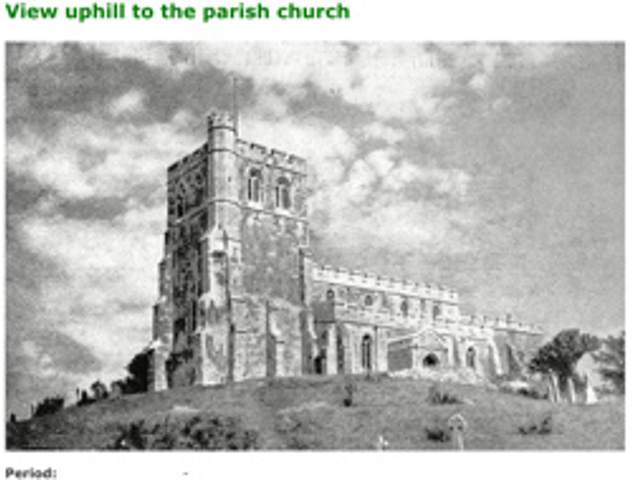Into the Depths of Time
- What I spent, I have had
- What I gave, I have
- What I refused, I am being punished for
- What I kept, I have lost.
So says the unique Rose Brass of Edlesborough church, which stands high on a chalk mound overlooking the Vale of Aylesbury and Ivinghoe Beacon. The mound may or not be an ancient British burial mound, but the view from it is superb.
Below the church is a 16th century tithe barn, which by its size, 180 feet long, shows how flourishing Edlesborough must once have been. Originally thatched, now tiled with mellow peg-tiles, its timberframed walls in-filled with brick and Totternhoe clunch from the village next-door-but-one, it is being carefully restored to fit its new role as offices. Church Farm, its host, is farmed from outside, and the buildings will be houses. The farm has a spring-fed moat inside which is a dove-cote, and round the moat still rides the ghost of Jack the Leather, 'Old Leather Breeches', a highwayman who was dragged from his hiding place in the farm stables to the gibbet at the Beacon. While in hiding his only exercise had been at night, riding the farm horses round the moat, and the lathered horses were spotted one morning by the soldiers sent to find him.
The moat may have surrounded a monastic building. There is certainly a stew pond and fish trap in the grounds of the school next door, which the children are hoping to restore. Let us hope the ghost enjoys his renovated environment. A few yards further along the road, in the grounds of the Old Vicarage, another ghost, that of a gardener murdered in a brawl between rival households, must hear the sounds of children at play and be reminded of happier times.
The ghost of Dick Turpin only frequents the village at night. He had a secret hide-out at Butler's Manor at Northall, where a now blocked up window once commanded a view of laden stage coaches passing Ivinghoe Beacon. There was plenty of time for him then to ride across country to hold up the coach at the old road at Dunstable. He rides now of a dark night along the narrow road between the church and the Tring Road.
The village green, a large, well-laundered open space with football pitches, cricket table, tennis courts and children's swings was once gated to stop grazing animals escaping. These grazing rights were held by those living in the surrounding cottages. These are still standing behind the newer houses which were built after the Enclosure Act took effect in Edlesborough in 1855. The shape of the old common land can still be seen, since the cottagers were allowed to plant and prune damson trees local to the district on the common to a depth of 40 ft, and forward of this 40 ft the new roads were built. In a good year the damsons, sold for dye-making and sent off from Stanbridgeford Station on the train called the Dunstable Flyer, went far to helping a family through the winter. In the last century Edlesborough was a poor village and fast depopulating, from 1,371 in 1891 to 898 in 1921. There were plenty to make full use of the 864 41b loaves provided yearly by Rendell’s 16th century charity.
The 19th century village was owned largely by the Ashridge Estate. Houses were painted in the Ashridge colour of dark maroon brown with identical wooden fences in front. These were the first things to be changed when houses passed into private ownership, the way that nowadays the council house gains a porch and a new front door. Agriculture for the menfolk was supplemented by the women and children's wages from straw plaiting for the Luton hat industry, and one of the new victorian houses had a room for a plait school above the archway to its stable. In 1895, the new Parish Council consisted of five farmers, one farmer and dealer, one plait merchant, a labourer and a carpenter. Now Manor Farm is the last to be farmed by a farmer living in the village farmhouse surrounded by its buildings. Charity Farm, buildings now houses, has the maladjusted ghost of a farmworker. His threshing floor has been lowered to form a new house level, but he remains at the old height and is only ever half seen.
